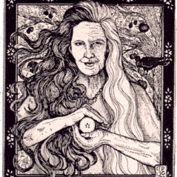A Big Win for Democrats in California Came With a Gut Check for Liberals
Joe Biden received one of the highest margins in the nation in California, but a look at how the state’s ballot measures were decided shows a more complex picture of the electorate.
OAKLAND, Calif. — The message that California voters sent in the presidential election was unequivocal: With almost two-thirds of ballots counted so far going for Joseph R. Biden Jr., the nation’s most populous state put up mammoth numbers for the Democrats. But dig a little deeper into the results and a more complex picture of the Golden State voter emerges, of strong libertarian impulses and resistance to some quintessentially liberal ideas.
In a series of referendums, voters in California rejected affirmative action, decisively shot down an expansion of rent control and eviscerated a law that gives greater labor protections for ride-share and delivery drivers, a measure that had the strong backing of labor unions. A measure that would have raised taxes on commercial landlords to raise billions for a state that sorely needs revenue also seemed on track for defeat.
The full force of the election results provided something of a gut check for liberals in a state that plays a big role in the Democratic Party and often offers insights into where the rest of the nation might be headed.
“The results in California show the Democrats that you can go too far,” said Bob Shrum, a former Democratic strategist and the director of the Dornsife Center for the Political Future at the University of Southern California. “California is a very liberal state that is now resistant to higher taxes and welcoming to the new gig economy, which is where the industry was created.”
That is not to say California is lurching rightward. The state is unwaveringly Democratic up and down the ranks of its government. Democrats have a supermajority in the Legislature, and the governor and lieutenant governor are Democrats. Even the state’s chief justice, Tani Cantil-Sakauye, quit the Republican Party two years ago and became an independent.
Pockets of unambiguous liberalism stayed strong on Tuesday with San Francisco voters saying yes to liberal priorities including affordable housing, police oversight and new taxes on companies whose highest-paid manager makes more than 100 times the level paid to its local workers.
And on many ballot measures, California voters validated the state’s liberal reputation. They rejected an expansion of penalties for some crimes and restored voting rights for felons who are on parole, securing the state’s position as a national leader in reducing mass incarceration and reforming its criminal justice system.
This year’s mixed results, however, were not an anomaly. California has always had competing impulses. The state that is home to Nancy Pelosi, the speaker of the House of Representatives, also produced icons of conservatism including Ronald Reagan. Some of the most prominent conservative voices during the Trump presidency hail from California, including Kevin McCarthy, the House minority leader; Devin Nunes, the outspoken congressman and staunch Trump ally; and Stephen Miller, the hard-line anti-immigration White House adviser.
This has put California on the front lines of many political battles. The affirmative action measure on the ballot this year, for example, dated to 1996. That year, 55 percent of the state’s electorate voted to ban the use of race, ethnicity, national origin or gender in public hiring, contracting and university admissions.
The proposition that California voted on this time would have repealed the ban and was supported by a who’s who of the Democratic Party in the state, including Kamala Harris, the senator and vice-presidential candidate. But it was defeated by almost the same margin with which it had passed originally.
Analysts saw a reflection of the state’s demographic complexity in the vote.
“It’s always difficult to do proposition campaigns in a state of 40 million people,” said Anthony Rendon, a Democrat and the speaker of the California Assembly. “But our racial and ethnic groups are more complicated and divided than they used to be, in a bunch of different ways.”
Since 2014, no one racial or ethnic group has constituted a majority of California’s population. Thirty-nine percent of California residents are Latino, 37 percent are white, 15 percent are Asian-American, 6 percent are Black and fewer than 1 percent are Native American or Pacific Islander, according to the 2018 American Community Survey.
More: https://www.nytimes.com/2020/11/05/us/california-election-results.html?campaign_id=56&emc=edit_cn_20201106&instance_id=23856&nl=on-politics-with-lisa-lerer®i_id=58085075&segment_id=43701&te=1&user_id=d84861ac2c6e3214d9ec5c3c3024157d







